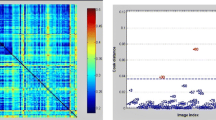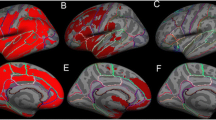Abstract
Objective
One of the most interesting clinical applications of 18F-FDG PET imaging in neurodegenerative pathologies is that of establishing the prognosis of patients with mild cognitive impairment (MCI), some of whom have a high risk of progressing to Alzheimer’s disease (AD). One method of analyzing these images is to perform statistical parametric mapping (SPM) analysis. Spatial normalization is a critical step in such an analysis. The purpose of this study was to assess the effect of using different methods of spatial normalization on the results of SPM analysis of 18F-FDG PET images by comparing patients with MCI and controls.
Methods
We evaluated the results of three spatial normalization methods in an SPM analysis by comparing patients diagnosed with MCI with a group of control subjects. We tested three methods of spatial normalization: MRI-DARTEL and MRI-SPM8, which combine structural and functional images, and FDG-SPM8, which is based on the functional images only.
Results
The results obtained with the three methods were consistent in terms of the main pattern of functional alterations detected; namely, a bilateral reduction in glucose metabolism in the frontal and parietal cortices in the patient group. However, MRI-SPM8 also revealed differences in the left temporal cortex, and MRI-DARTEL revealed further differences in the left temporal cortex, precuneus, and left posterior cingulate.
Conclusions
The results obtained with MRI-DARTEL were the most consistent with the pattern of changes in AD. When we compared our observations with those of previous reports, MRI-SPM8 and FDG-SPM8 seemed to show an incomplete pattern. Our results suggest that basing the spatial normalization method on functional images only can considerably impair the results of SPM analysis of 18F-FDG PET studies.




Similar content being viewed by others
References
Herholz K. PET studies in dementia. Ann Nucl Med. 2003;17(2):79–89.
Salmon E, Lekeu F, Garraux G, Guillaume B, Magis D, Luxen A, et al. Metabolic correlates of clinical heterogeneity in questionable Alzheimer’s disease. Neurobiol Aging. 2008;29(12):1823–9.
Landau SM, Harvey D, Madison CM, Koeppe RA, Reiman EM, Foster NL, et al. Associations between cognitive, functional, and FDG-PET measures of decline in AD and MCI. Neurobiol Aging. 2011;32(7):1207–18.
Frackowiak RSJ, Friston KJ, Frith CD, Dolan RJ, Mazziotta JC. Human brain function (Chapter 4, Section 3). San Diego: Academic Press; 1997.
Ashburner J, Friston KJ. Nonlinear spatial normalization using basis functions. Human Brain Mapp. 1999;7(4):254–66.
Gispert JD, Pascau J, Reig S, Martínez-Lázaro R, Molina V, García-Barreno P, et al. Influence of the normalization template on the outcome of statistical parametric mapping of PET scans. NeuroImage. 2003;19(3):601–12.
Ashburner J. A fast diffeomorphic image registration algorithm. NeuroImage. 2007;38(1):95–113.
Ashburner J, Chun-Chuan C, Guillaume F, Henson R, Kiebel S, Kilner J, et al. SPM8 Manual2009.
Herholz K, Carter SF, Jones M. Positron emission tomography imaging in dementia. Br J Radiol. 2007;80(Special_Issue_2):S160–7.
Matsuda H. Role of neuroimaging in Alzheimer’s disease, with emphasis on brain perfusion SPECT. J Nucl Med. 2007;48(8):1289–300.
Mosconi L, Tsui WH, Herholz K, Pupi A, Drzezga A, Lucignani G, et al. Multicenter standardized 18F-FDG PET diagnosis of mild cognitive impairment, Alzheimer’s disease, and other dementias. J Nucl Med. 2008;49(3):390–8.
Silverman DHS, Mosconi L, Ercoli L, Chen W, Small GW. Positron emission tomography scans obtained for the evaluation of cognitive dysfunction. Semin Nucl Med. 2008;38(4):251–61.
Petersen RC, Roberts RO, Knopman DS, Boeve BF, Geda YE, Ivnik RJ, et al. Mild cognitive impairment: ten years later. Arch Neurol. 2009;66(12):1447–55.
Folstein MF, Folstein SE, McHugh PR. “Mini-mental state”: a practical method for grading the cognitive state of patients for the clinician. J Psychiatr Res. 1975;12(3):189–98.
Mathuranath PS, Nestor PJ, Berrios GE, Rakowicz W, Hodges JR. A brief cognitive test battery to differentiate Alzheimer’s disease and frontotemporal dementia. Neurology. 2000;55(11):1613–20.
Lezak MD, editor. Neuropsycological assesment. 3rd ed. Oxford: Oxford University Press; 1995.
Delis DC, Kramer JH, Kaplan E, Ober BA. California verbal learning test—second edition. Adult version. Manual. Psychological Corporation, San Antonio, TX; 2000.
Rey A. L’examen psychologique dans les cas d’encephalopathie traumatique. Arch de Psychologie. 1941;28:286–340.
Le Osterrieth P. test de copie d’une figure complexe. Arch de Psychologie. 1944;30:206–356.
Dubois B, Slachevsky A, Litvan I, Pillon B. The FAB: a frontal assessment battery at bedside. Neurology. 2000;55(11):1621–6.
Winblad B, Palmer K, Kivipelto M, Jelic V, Fratiglioni L, Wahlund LO, et al. Mild cognitive impairment—beyond controversies, towards a consensus: report of the International Working Group on Mild Cognitive Impairment. J Intern Med. 2004;256(3):240–6.
Petersen RC, Smith GE, Waring SC, Ivnik RJ, Tangalos EG, Kokmen E. Mild cognitive impairment: clinical characterization and outcome. Arch Neurol. 1999;56(3):303–8.
Hughes CP, Berg L, Danziger WL, Coben LA, Martin RL. A new clinical scale for the staging of dementia. Br J Psychiatry. 1982;140:566–72.
Blesa R, Pujol M, Aguilar M, et al. Clinical validity of the ‘mini-mental state’ for Spanish speaking communities. Neuropsychologia 2001;39:1150–1157.
Acton PD, Friston KJ. Statistical parametric mapping in functional neuroimaging: beyond PET and fMRI activation studies. Eur J Nucl Med. 1998;25(7):663–7.
Ishii K, Willoch F, Minoshima S, Drzezga A, Ficaro EP, Cross DJ, et al. Statistical brain mapping of 18F-FDG PET in Alzheimer’s disease: validation of anatomic standardization for atrophied brains. J Nucl Med. 2001;42(4):548–57.
Bookstein FL. “Voxel-based morphometry” should not be used with imperfectly registered images. NeuroImage. 2001;14(6):1454–62.
Reig S, Penedo M, Gispert JD, Pascau J, Sánchez-González J, García-Barreno P, et al. Impact of ventricular enlargement on the measurement of metabolic activity in spatially normalized PET. NeuroImage. 2007;35(2):748–58.
Acknowledgment
This study was supported by the following institutions: Ministerio de Ciencia e Innovación, AMIT Programa CENIT. M.E. Martino was supported by the Contrato Río Hortega (Instituto de Salud Carlos III, Ministerio de Economía y Competitividad).
Conflict of interest
None of the authors have conflicts of interest to declare.
Author information
Authors and Affiliations
Corresponding author
Rights and permissions
About this article
Cite this article
Martino, M.E., de Villoria, J.G., Lacalle-Aurioles, M. et al. Comparison of different methods of spatial normalization of FDG-PET brain images in the voxel-wise analysis of MCI patients and controls. Ann Nucl Med 27, 600–609 (2013). https://doi.org/10.1007/s12149-013-0723-7
Received:
Accepted:
Published:
Issue Date:
DOI: https://doi.org/10.1007/s12149-013-0723-7




